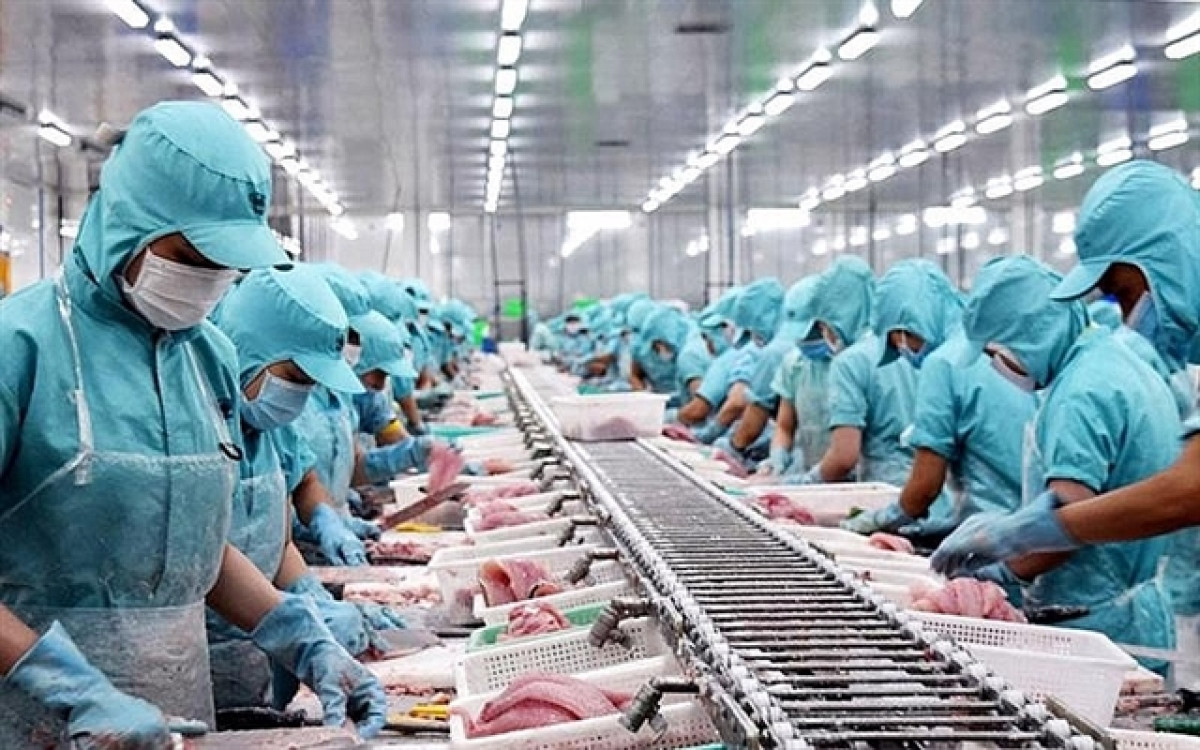

In the best scenario with a recovery of the market and a stable supply of raw materials, seafood exports in the remaining five months of 2023 may reach over US$4 billion, bringing the total export value in 2023 to US$9 billion.
However, this is a decline of 15-16% compared to 2022.
Of which, the export value is forecasted to plunge by 28% for pangasius to US$1.7-1.8 billion, and 16-18% for shrimp to about US$3.5-3.6 billion. Exports of tuna and squid-octopus will decrease by 14-15% to US$870 million and US$650 million, respectively.
According to Le Hang, VASEP communications director, seafood exports are expected to recover as the economic performance of major markets is forecasted to be more positive in the second half of the year, while the import demand of markets such as the US and China is tending to increase again. Those markets have lower inventory and are preparing supplies for their year-end festivities and the new year.
Enterprises and the seafood supply chains are supported in terms of capital in a timely manner as well as production and business conditions to maintain stable supply of raw materials for export contracts in the future, Hang said.
Meanwhile, Vietnam's export seafood products have stable supply and competitive prices compared to other countries, she said.
According to VASEP, seafood exports in the first seven months of this year were estimated to reach nearly US$5 billion, down 25% year-on-year. Among key products, pangasius had the strongest reduction at 36% in exports compared to the same period of last year, followed by shrimp and tuna (down 27%).
In July, the value of seafood exports was estimated at US$830 million, down 11% compared to the same period in 2022.
The most obvious recovery signal was in the Chinese market with a year-on-year increase of 45% in export value to US$180 million in July.
Exports to other key markets in July plunged between 5 and 40 per cent over the same period of last year, including the US, the Republic of Korea and the EU.
The Japanese market was more positive thanks to value-added and processed goods, especially marine fish.
China is still expected to be the most prospective market for local seafood enterprises because trade activities are gradually returning to normal. In the second half of the year, China's economy will likely be more stable, and people's income and consumption will be improved. Therefore, Vietnam's seafood exports to mainland China and Hong Kong (China) will have a chance to recover, reaching a total turnover of about US$1.8 billion for both.
Tran Dinh Luan, director of Fisheries Department under the Ministry of Agriculture and Rural Development, said Vietnam is very likely to achieve US$9 billion from the seafood export turnover of the whole year.
The ministry still keeps the export target of US$10 billion although it requires much effort to reach this goal, according to Phung Duc Tien, Deputy Minister of Agriculture and Rural Development.
According to VASEP, there are positive signals in exports both for shrimp and pangasius. The pangasius volume exported to the US has reached over 50% of the plan. The pangasius inventories in this market have fallen. Therefore, the fishery industry should prepare all resources to seize this opportunity. It's the same situation for shrimp exports, Tiến said.
Besides that, a credit package of VND15 trillion is being implemented to create good conditions for the businesses to promote seafood exports in the future, he said.
VASEP has also released a less optimistic scenario. When the market shows signs of recovery and demand will increase again, but Vietnam's seafood products still struggle to compete in terms of price and supply with other countries such as Ecuador, India, Indonesia, and Thailand.
That means the industry does not have immediate and long-term solutions dealing with high production costs, a reduction in profits, and a lack of capital for the development of inventories leading to a shortage of raw materials for production in the second half of the year.
With that scenario, the value of exports is estimated to reach about US$3.5 to US$3.7 billion in the last five months of the year, and US$8.5 to US$8.7 billion for the whole year of 2023. Of which, the deepest decline in exports is still in the two industries of pangasius and shrimp.
Seafood exports may be worse if the 'yellow card' warning issued to Vietnam by the European Union is not lifted after the working session of the commission's fourth inspection team in October 2023.
Source: VOV